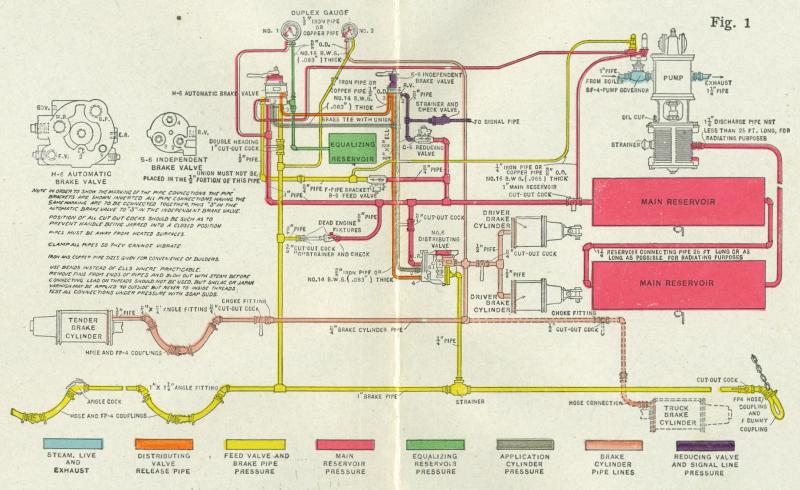steamer_ctn, on 19 March 2016 - 01:58 PM, said:
As has been agreed (?) by most participants there appears to be a need to differentiate between the pressures applied to the train brake and the engine brakes.
OK. I see why you have a running position on the engine brake now, but that diagram also shows a triple valve isolating cock in the engine brake system so it can operate in a more normal straight airbrake way.
"Running - In this position, the locomotive and tender brakes are "slaved" to the train brake system, so that if the train brakes are applied or released, the engine and tender brakes will go to the same state. This is the normal operating position for the engine and tender brakes".
This means that either you did not fully release the engine brake before applying the running position or we have a bug in the brake code somewhere. That still does not require a BC figure on the engine brake line, just a percentage of the application as it is now. It would appear that using the running position does not show this percentage like it does on brake systems that do not have a "running" position so it is doubtful that having a BC figure there will show either. Comparing your screen shot with a US style engine brake, the Running has actually replaced the application percentage figure that normally shows there.
It therefore looks like the train brake should be divorced from the engine brake in the HUD, and the engine brake display needs to be modified to show either released, running or applied but only needs to retain the percentage, not change it to a BC figure because a % figure tells you that you still have engine brakes applied to some degree.

 Log In
Log In Register Now!
Register Now! Help
Help







